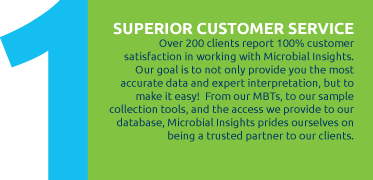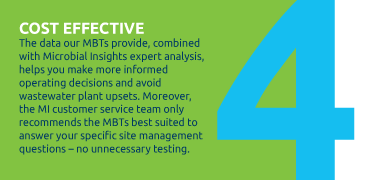Microbial Insights has been a leader in the industry, offering cutting edge technologies for the testing and analysis of industrial & municipal wastewater. Our molecular biological tools (MBTs) provide more accurate quantification of key microorganisms like nitrifiers and comprehensive characterization of microbial communities to identify problematic microorganisms, giving you the crucial information needed to make informed operating decisions.
ISSUE: Industrial and municipal wastewater treatment depends upon having the “right” microorganisms present at sufficient concentrations for optimal operation. Conversely, problematic organisms can lead to foaming, bulking, poor settling and other issues.
IMPACT: Influent characteristics, surges, shocks, and operating conditions will impact the microbial community, concentrations of desired and problematic microorganisms, and ultimately plant operation and performance.
THREATS: Exceeding discharge limits + Plant upsets.
PATH TO RESOLUTION: Microbial Insights’ DNA based methods can cost-effectively answer microbiological questions which cannot be answered with microscopy or other traditional methods.






